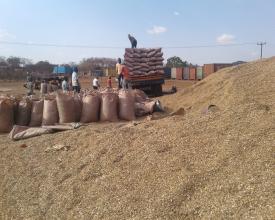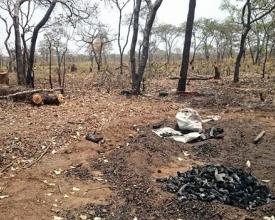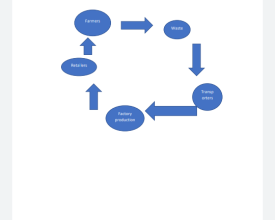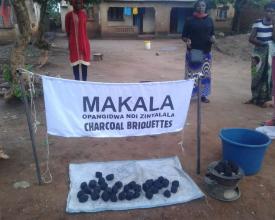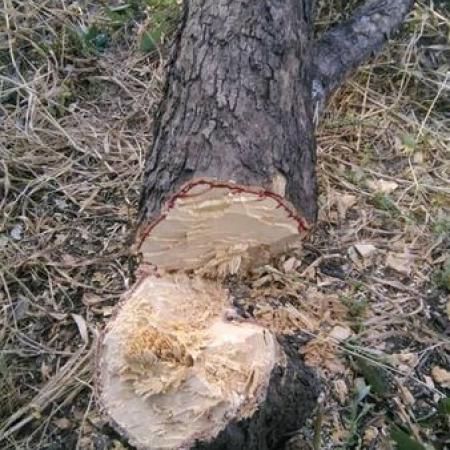
Transforming low income earning Malawian households from use of forest wood charcoal to use of charcoal briquettes in order to preserve the natural animal habitats and ecosystem
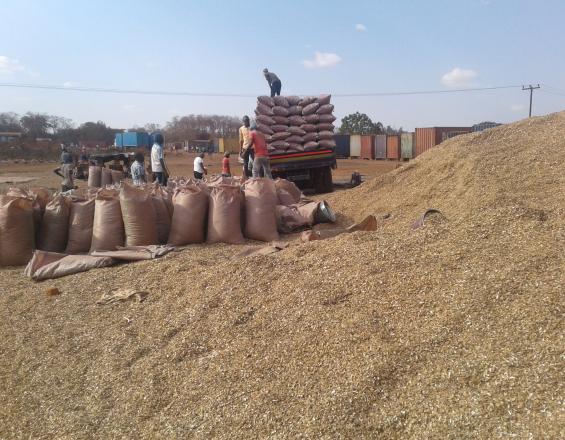
We are collecting agricultural residues such as rice husks, groundnut shells, maize cobs and maize stalks from farmers. We add value to them and produce Charcoal briquettes to curtail the cutting down of trees for firewood. Charcoal Briquette is a sustainable and reliable source of energy that helps replace the use of firewood,
By adopting charcoal briquettes made from agricultural residues, fragile forests are protected, the natural habitats for animal species are preserved while still meeting the energy and income needs of the growing populations.
Women and the youth that used to be involved in cutting down trees from the forests are now employed either at production facilities or as retailers of charcoal briquettes. 32,000 hectares of forest cover which Malawi loses every year is left to regenerate preserving natural habitat for different animal and plants species.
Context
Challenges addressed
Malawi has population of 18.6 million and is expected to double by 2038. Energy shortages still stand out, with about 11.4% of the population having access to electricity. Pushed by this, the population uses forests as sources of cheap cooking energy. This exerts pressure on limited natural resources which has negatively affected the natural habitat for animal and plant species.
Malawi remains one of the poorest countries whose economy is heavily dependent on agriculture and it is vulnerable to climatic shocks which have forced most of the youth and women get involved in the selling of charcoal and firewood leading to deforestation.
One of the biggest environmental challenges in Malawi is deforestation. Malawi was previously heavily forested with much of the country under forests. Wood is the main fuel in Malawi, and 95% of homes still use wood or charcoal for cooking which contributes to one of the environmental challenges facing Malawi.
Location
Process
Summary of the process
Farmers and sources of raw materials. Our production depends on the availability of agricultural residues which farmers previously thought that they were useless. If farmers burn these residues, it will be difficult for us to get the raw materials for production.
Transportation and production. Transport plays a major role in the collection of raw materials to the production facilities. It is difficult to reach to scattered areas for raw materials without proper means of transportation.
Production and retailing. It is important that production has to be taking place so that products are available to customers. There is also need for transportation to reach to these outlets.
Community awareness and purchasing. Without community members being aware of the availability of charcoal briquettes and their advantages towards conserving biodiversity, the initiative will not grow.
Labor availability and production. Without availability of labour production of charcoal briquettes is hampered especially in the areas of agricultural residue collection, drying and packaging.
Building Blocks
The process of conserving biodiversity through production of Makala charcoal briquettes
Understanding the reasons for forest encroachment: The driving force is the need for firewood. This is caused by the need for cheap sources of cooking energy and the need for employment. To solve these two issues, people resort to cutting down trees for firewood affecting the natural habitat for plants and animals.
Site selection: Consideration is made for site selection that is close to the source of raw materials and the targeted population and building of structures.
Raw Material sourcing. The first step is to consider establishing the potential availability of agricultural waste that can be used in the process of producing the briquettes.
Processing and production This involves sorting and grinding. Then the sorted materials are pressed into briquettes which are then sent for drying and testing to establish durability of the briquettes.
Community involvement: Durability of the briquettes to the community is done through participatory cooking demonstration. Community leaders are invited to explain the benefits.
Biodiversity conservation: When communities become aware of the availability briquettes meeting their cooking and employment needs trees are no longer cut down hence preserving the natural habitats for animals and plants species.
Enabling factors
Community awareness is the most important success factor. Other factors include continued availability of the briquettes since any delay to distribute them will lead the community to go back to their old system.
Governments and donor agencies have to come in and support such type of initiatives.
Alternative sources of raw materials. Agricultural residues are seasonal, and this requires collecting huge quantities when they are available or finding substitutes for continued production.
Lesson learned
Passion is the driving force. Most of the communities have been rooted in their traditional cultures that forests are the only sources of firewood and income generation. It is hard to convince these people to change. Without passion and commitment, the projects can fail because acceptability takes long.
There is need to offer incentives to the communities such as encouraging them to practice agroforestry business that can be used to conserve rare species of animals and plants that can be used to attract tourists.
One of the challenges is failure to establish partnerships with raw materials suppliers because it becomes hard when the sources are scattered and unorganized.
Key supporting resources for the production of charcoal briquettes towards conserving nature
Farmers. Farmers are the key players in this process for the production of agricultural residues that are used as our raw materials.
Organized transport systems: Raw material sources are always scattered, and they need to be collected and transported to the production facility. This requires consolidating them for easy transportation. There is need for reliable means of transport that have to be used efficiently and effectively
.
Retail outlets and distribution centers. When briquettes are produced, communities’ members need to be accessing them without any hustles. This requires the recruitment of retailers to stock these products.
Pricing mechanisms. Switching the communities to the new alternative sources of cooking energy requires offering them with reduced price that will attract them. To achieve this, entrepreneurs need to consider minimizing their production costs by analyzing the production process.
Labour intensive. The process of collecting raw materials from farmers is labour intesnsive. Loading and offloading from the trucks also requires labour. Soring of raw materaisl is another area also. Packaging of the product is also labour intensive.
Enabling factors
Good rainfall for agricultural residues. Climate changes caused by factors such as deforestation have affected rainfall patterns hence reduced harvests.
Formation of partnerships helps in establishing permanent and reliable sources of raw materials.
Availability of retail outlets that are within the reach of the community members.
Availability of manpower to join the processing of charcoal briquettes which is always regarded as dirty job
Lesson learned
To ensure retail outlet coverage, it was learnt that the established sellers of firewood are the best ones to be recruited. They have experience selling firewood and can easily influence their customers to start using charcoal briquettes to save the environment. However, one of the challenges faced is that some retailers see the introduction of charcoal briquettes as a threat to their established business.
Another challenge is that transporters tend to raise their prices once they discover that the waste they are hired to transport are turned into cash. This is where the need for organized transport system matters.
It has been noted that the majority of labour available is from women This provides an opportunity to empower men to do the jobs that would always have been done by men
Impacts
Natural habitat for animal species is preserved. Deforestation directly leads to biodiversity loss when animal species that live in the trees no longer have their habitat and therefore become extinct and also leads certain tree species to permanently disappear.
Humans are protected from getting into contact with wildlife animals. The main impacts on biodiversity are from human-wildlife conflicts related to continued human encroachment on fragile ecosystems which brings humans into ever-greater contact with wildlife.
Loss of water and erosion is contained. The cutting down of trees for mainly charcoal production has caused large area of forests cleared destroying all the water catchment areas casuing scarcity of water for animals in the forests.
Afforestation of land is encouraged due to population awareness of the need to satisfy alternative source for energy needs which reduces the pressure on forests contributing to biodiversity conservation.
The solution promotes agro-forestry and tree growing as a business activity.The forests that harbour natural and different animal species tend to attract tourists. Tourism therefore contributes to improving livelihoods of communities
Beneficiaries
Preserved natural habitats
Women and girls no longer enter forests and harassed
Girls have time to study
Women and youth trade in legalized briquettes
Forest tourism activities created
Sustained water catchment areas
Preservation of rare species
Sustainable Development Goals
Story

In 1975 many of our parents realized that there were economic opportunities in Lilongwe after it was established as capital city of Malawi. Many of them settled in all the surrounding areas such as Kawale Biwi, Chinsapo and others. They depended on firewood that was easily available in the woodland bushes and along the surrounding rivers where different species of creatures were living.The population started growing and the bushes were diminishing pushing away the animals and other creatures away to other areas where they felt protected.
With the increased population the companies were not able to employ all the people. And with the same increased population, the need for cooking energy increased. Compounded with these two needs, natural forest reserves became targets for source of employment and source of firewood for cooking energy. As time has gone, the forests are turning into deserts.
Deforestation has contributed towards climate changes in Malawi. Rainfall patterns have changed as the rainfall is not reliable and falls for short periods of time. This has affected the natural environment for the animals and other creatures to face extinction due to lack of food and protection. Deforestation has affected the ecosystem and many forest creatures have lost their natural habitants thereby affecting the whole system. Further, Malawi is an agriculture dependent country and rainfall challenges affect the rate of harvests which later again affect the human population.
MAKALA Charcoal briquettes are the solution providing cheap source of cooking energy, providing sources of income to employees and retailers and deforestation is reduced as trees are not cut down hence preserving the natural habitats for forest creatures.
